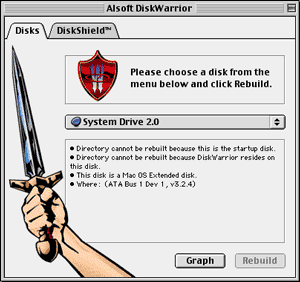

Apple silicon Macs can always start up from suitably prepared external bootable disks, but only do so after starting their boot process from the internal SSD. One action that can make it easier to access an ailing Intel Mac with a T2 chip is to start up in Recovery mode, open Startup Security Utility and enable that Mac to boot from an external disk: that’s disabled by default. You don’t have that option when the problem is on the Mac’s internal storage, particularly the SSD in an Apple silicon or T2 Mac. When the error occurs on an external disk, your first action should normally be to unmount and disconnect that disk, to avoid using it any further and possibly worsening the error to the point where its contents become unrecoverable. While Disk Utility and its command tool sibling fsck can check and repair other formats, they’re best at dealing with the Mac’s two native formats, HFS+ and APFS.
Diskwarrior rebuild startup disk Pc#
If it’s a PC format such as ExFAT or another non-native disk format, then you’re best off attempting to repair that disk on a computer with more extensive tools and utilities to support that, such as a PC. The first thing you need to establish is which disk is affected, which volume on that disk, and what format that volume uses. errors reported when running First Aid in Disk Utility, although some may be spurious (see below).errors accessing or maintaining Time Machine backups.

impaired disk performance, or hanging when trying to access files.failure to recognise and mount an external disk, which might appear to be the result of a physical connection problem such as a defective cable.a kernel panic, which may not appear directly linked to the error.Disk errors can present in a variety of ways, some of which may not help you identify the underlying problem, including:


 0 kommentar(er)
0 kommentar(er)
